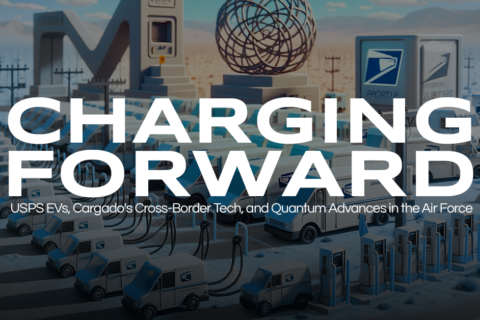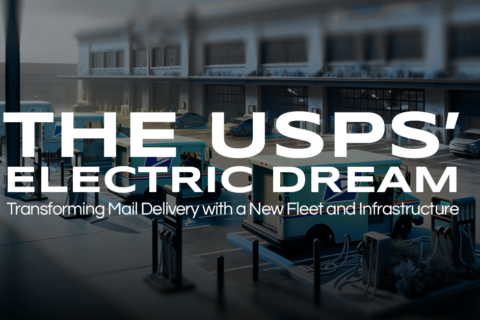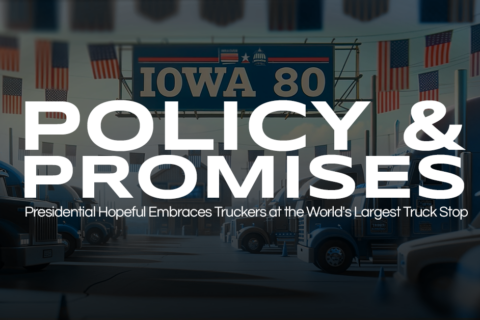As we embark on another year in the dynamic world of trucking, recent developments signal a transformative period for the industry. From legislative halls to the roads of Pennsylvania, change is in the air, driven by a commitment to safety, sustainability, and economic viability. Join us as we delve into these pivotal shifts, exploring how they intertwine to redefine the future of trucking. Hiking Insurance Minimums for Truckers In a now-familiar move in Congress, a new bill aims to significantly raise the minimum liability insurance for interstate motor carriers. This change, from the current $750,000 to a substantial $5 million, could reshape the financial landscape for the trucking industry. Introduced by Representatives Jesus “Chuy” Garcia and Hank Johnson, the “Fair Compensation for Truck Crash Victims Act” marks another step in an ongoing legislative journey. Adjusting for Inflation: A Responsive Measure The bill stands out for its approach to tie insurance minimums with inflation, specifically considering healthcare and related expenses. This proactive measure ensures that the legislation remains relevant and effective in the face of economic changes. Authored by Garcia, who previously penned the INSURANCE Act, this bill also involves a collaborative effort between the Secretary of Transportation and the Bureau of Labor Statistics to regularly update these minimums. A Quest for Justice and Protection The driving force behind this bill is the desire to deliver justice and safeguard communities. Garcia emphasizes the need to protect families from the overwhelming financial and emotional aftermath of truck crashes. By requiring trucking companies to hold sufficient insurance, the bill aims to prevent families from financial ruin due to accidents beyond their control. With notable support from various representatives, this initiative seeks to bring about significant change in the trucking industry. 🔗 Explore the full details of the trucking insurance bill here. The Final Ruling: Minor but Meaningful Adjustments After extensive anticipation, the Department of Labor (DOL) has finally unveiled its finalized independent contractor rule. While largely mirroring the proposed version, it introduces a few nuanced changes, seen as modestly positive for the trucking industry. The rule, essentially an administrative guide for the Wage and Hour division of the DOL, is set to play a critical role in resolving classification disputes. Industry Reactions: A Spectrum of Opinions Leading analyst and attorney Richard Reibstein, who specializes in independent contractor issues, noted the lack of significant surprises in the rule. Despite over 55,000 comments during the public feedback phase, only minor tweaks were made. The American Trucking Associations (ATA), however, expressed severe criticism, with ATA President Chris Spear decrying the rule as detrimental to the freedom and livelihood of many truckers. In contrast, Reibstein highlighted the regulatory nature of the rule and its limited influence in the eyes of the court. Subtle Yet Significant Shifts The rule’s treatment of worker investments, particularly in the trucking sector, marks a noteworthy shift. The DOL has now adopted a more qualitative approach to assessing investments, such as truck ownership. This change could increase the likelihood of truckers being classified as independent contractors. The DOL’s revised stance, aligning closer with the industry’s perspective, suggests a more nuanced understanding of the trucking business model. Balancing Six Key Factors The rule retains the six primary factors from the Trump-era guidelines but eschews any hierarchy among them, favoring a balanced, totality-of-the-circumstances approach. This includes assessing the role of services in the employer’s business, investment in facilities, degree of control, profit and loss opportunities, initiative and foresight, and the permanence of the relationship. The Biden administration’s rule also acknowledges specialized skills like holding a CDL (Commercial Driver’s License), potentially benefiting the trucking industry in classification disputes. Legal Landscape and Future Implications While the DOL’s rule is a significant regulatory development, it’s not the final word on independent contractor status — that power lies with the courts. The rule’s influence is shaped by its alignment with prior court decisions and its status as an administrative interpretation rather than a concrete law. As the trucking industry adapts to these changes, the real impact will unfold in future legal interpretations and industry responses. 🔗 Explore the details of the new independent contractor rule here. Pioneering Eco-Friendly Transportation in Pennsylvania Watsontown Trucking has received a substantial boost in its eco-friendly endeavors, securing nearly $1.8 million from the Pennsylvania Department of Environmental Protection. This funding, part of the state’s ambitious $39.6 million Medium and Heavy-Duty Zero-Emission Vehicle Pilot Grant, is a significant stride towards cleaner transportation. A Focus on Zero-Emission Vehicles The grant is earmarked for replacing diesel fleets with zero-emission vehicles (ZEVs) and installing electric vehicle charging stations at Watsontown’s Milton facility. The company plans to replace five Class 8 freight trucks and add two fast EV charging stations, aligning with the state’s goal to reduce carbon emissions from transportation. Driving PA Forward Initiative This grant, a component of the Driving PA Forward program under the Shapiro administration, aims to transition from older, high-polluting diesel engines to clean transportation technologies. Jessica Shirley, the state DEP’s interim acting secretary, emphasized the importance of clean air and the role of this initiative in addressing air quality challenges in Pennsylvania. Impacting Local Communities The grant not only supports environmental goals but also focuses on benefiting underserved and disproportionately impacted communities. The new trucks will operate in Milton, Sunbury, Lewisburg, Northumberland, and areas serving Watsontown’s clients. This move is set to have a positive local impact, both environmentally and economically. Future Prospects: Beyond Local Shuttle Operations Steve Patton, president of Patton Logistics, expressed gratitude for the state’s recognition of their commitment to reducing their carbon footprint. While Watsontown currently operates five ZEVs for local shuttle operations in Dublin, Virginia, the company looks forward to expanding the role of these vehicles. Patton acknowledges the need for more robust infrastructure to support longer hauls and over-the-road applications, a goal that this grant significantly propels forward. A Milestone in Environmental Progress This investment in Watsontown Trucking is a key step in Pennsylvania’s journey towards a cleaner, more sustainable future. It exemplifies how state initiatives…











Recent Comments